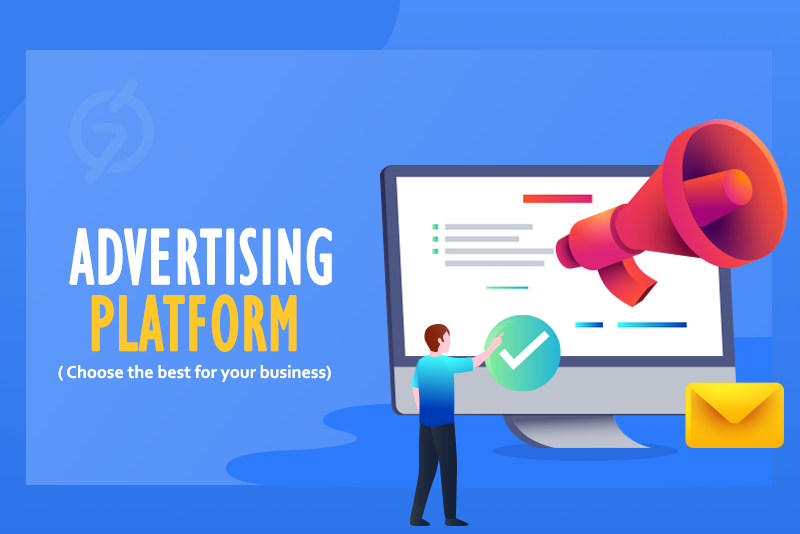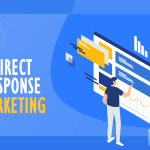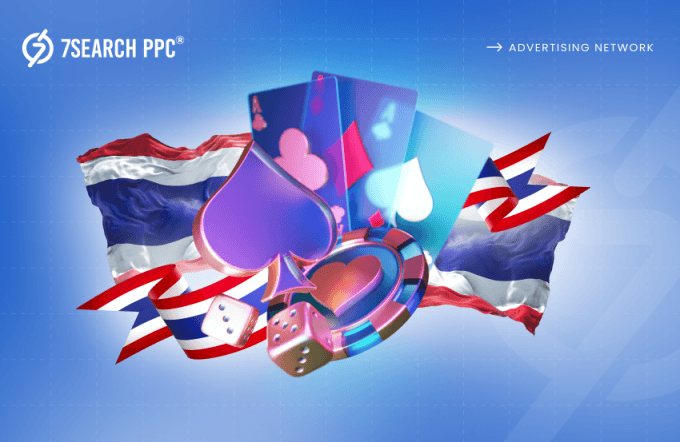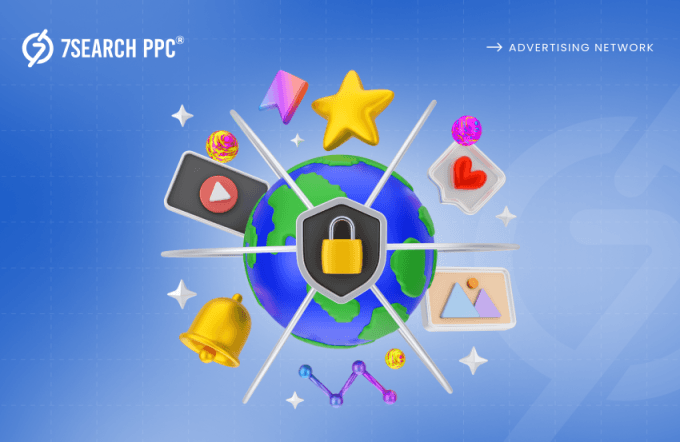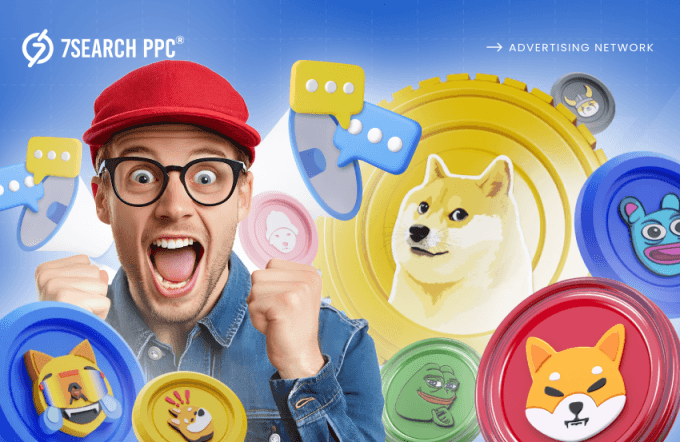When you ask advertisers about the advertising platforms they mostly use, they often mention giants: Google ads, Meta Ads, and, yes, 7Search PPC. No doubt these ad networks earned so much fame around the globe just because of the kind of advertising services they served.
However, as the competition increases daily, the requirements of the advertisers also change. Now, they need more creative and customized advertising solutions to remain competitive. We are pointing out the ad formats and pricing models that directly match the advertising objectives of the advertisers.
Online advertising platforms are a crucial global marketing tool. It is projected that digital advertising spending is set to reach $740.3 billion in 2024. This investment is growing because businesses see the huge potential of online ads to reach and engage customers.
Now, where is the problem? You can easily start your ad campaign with a random ad network. Are things sorted? No, many advertisers wasted their ad budget by taking this shortcut. My friend, there is a procedure to filter and select the right advertising platform to help you attain your ad goals within your budget and timeframe.
In this blog, we will discuss the steps to choose the right advertising platform for your business.
Digital Advertising Platforms: An Overview
Do you remember the days when a salesperson would ring your doorbell daily and ask you to buy their latest product? This is a traditional way of marketing where businesses don’t use sophisticated digital advertising platforms to reach customers. The reason is? They were unaware of how much more effective and targeted their marketing efforts could be with online advertising.
As time passes, advertisers are placing more emphasis on digital advertising due to its effectiveness and precision in reaching targeted audiences. Now, in the U.S., about 80% of ad spending is in digital advertising.
What does the definition say?
Digital advertising platforms are essentially online tools for managing your online ads across different web spaces. They act as command centers for your digital marketing efforts. These platforms provide features to design ads, target ideal audiences based on demographics or interests, and track how your ads are performing. By using digital advertising platforms, businesses can reach more people and connect with their intended audience.
The Advantages of Digital Advertising Platforms
Online advertising platforms offer several advantages for businesses:
Targeted Reach
Unlike traditional advertising that reaches a wide audience randomly, digital platforms allow you to pinpoint your ideal customers precisely. You can target your customers based on these factors:
- Demographics
- Interests
- Online activities
- Past purchases
This ensures that your ads reach and attract the right audience who are most likely to be interested. When your ads reach the right people at the ideal time, your ROI automatically increases.
Real-Time Performance Tracking
The days of waiting for weeks to see how your ads perform are gone. Now, many digital advertising platforms give you real-time analytics dashboards. You can track:
- Impressions,
- Clicks,
- Conversions,
- Engagements as they happen
This lets you adjust your ad campaigns based on the results.
Budget Flexibility and Efficiency
Digital advertising platforms allow you to manage your budget carefully by giving you precise control over how and where your money is spent. Many advertising platforms provide various pricing models, such as CPC, CPM, and CPA. This helps you not only control your budget but maximize the effectiveness of your advertising spend.
Engaging Ad Formats
Digital advertising platforms have many options for advertisers. They allow advertisers to make their campaign more attractive by choosing their favorable ad format from the range of choices. Digital ad platforms offer a broad range of engaging ad formats, including video ads, native ads, and in-page push ads. These ad formats are designed to capture and hold the user’s attention, enhance brand recall, and encourage deeper audience interaction with your message.
Quicker Campaign Creation
Compared to traditional advertising, digital advertising platforms provide a significantly quicker turnaround time. You can swiftly create, launch, and adjust your ad campaigns, enabling you to take advantage of current trends and market opportunities in real time. This flexibility gives you an edge in a competitive market.
How do Advertising Platforms Operate?
Ad platforms function like a digital marketplace that connects advertisers with audiences through three key components.
Here’s how they generally work:
Real-Time Ad Auctions
Real-time bidding occurs when an advertising slot becomes available. When that space becomes available, advertisers enter an auction in real time. They bid on the slot based on factors like relevant keywords, audience demographics, etc. The winner is not always just the highest bidder. Some platforms consider a combination of bid amount and ad quality to ensure relevant content for users.
Targeting Choices
The power of online advertising lies in its potential to target specific audiences. Advertisers can define their ideal audience based on demographics such as age, location, and income, as well as interests and online behavior. For example, a sports equipment store could target people interested in sports and then further narrow down the audience by age, location, or recent searches for sports gear.
Advertising Formats
Not all ads are equally effective. Different platforms offer various ad formats to suit your objectives and target audience. Here are some common types:
- Text ads: Short text ads usually appear on search engine result pages (depending on relevant keywords). They are great for bringing more visitors to your website.
- Display Ads: Banners, images, or interactive elements placed on websites or apps can be effective for increasing brand awareness and capturing attention.
- Video Ads: Short clips that catch attention and convey a narrative, commonly found on platforms like social media.
By combining real-time auctions, targeted advertising, and a variety of ad formats, digital advertising platforms create a dynamic ecosystem that connects brands with their ideal customers.
Now, let’s use a scenario to help you understand how an ad platform works. Imagine you want to launch your product and decide to use the advertising platform Instagram.
- Setting Up the Campaign: You launch a new product and decide to use an advertising platform, such as Instagram, to promote it. You set a budget and a bid for video ad slots on the platform, timing to reach and engage users who have shown interest in similar products.
- Targeting the Audience: You define your ideal audience using criteria like age, interests, and devices. The advertising platform then uses this information to show your ad to the most relevant users.
- Optimizing Ad Delivery: The platform’s algorithms are essential for optimizing ad delivery. They analyze the past online behavior and preferences of your target audience to ensure the ad reaches people who are most likely to engage with it.
- User Engagement: As the ad is displayed to targeted users, those interested in the product engage with it. Engagement can take different forms, such as signing up for a free product demo or registering for a webinar providing more information about the product.
This precise approach helps maximize the impact of the ad, increasing the likelihood of driving sales and achieving a better ROI. By reaching the right audience at the right time, the advertising platform enhances the effectiveness of the ad campaign.
(Please note that this is a common way advertising platforms work, but the specifics can vary depending on the particular platform and its unique features and algorithms. Each platform may have different methods for targeting, optimizing, and delivering ads tailored to their specific audience and business goals.)
How to Select the Ideal Advertising Platform for Your Business?
When it comes to advertising, selecting the right platform is crucial for the success of your campaign. There is no universal solution, but considering important factors can help you choose the platform that best fits your business. Here is a roadmap to guide you through the selection process:
Define Your Advertising Goals
- Brand Awareness: If your primary advertising objective is to promote your brand name and increase recognition, platforms with a large user base or website partners like 7Search PPC, Instagram, or TikTok might be ideal.
- Lead Generation: If you are looking to capture potential customer information (emails, phone numbers) for further marketing efforts, platforms like LinkedIn, where professionals gather, or lead capture forms on 7Search PPC or Google Ads could be a good fit.
- Direct Sales: Platforms that allow direct product purchases within the ad itself, like Instagram shopping or Google Shopping ads, might be more suitable if your goal is immediate sales. You can also try the 7Search PPC ad network because it delivers only quality traffic, which can help you maximize your sales.
Audience Matters
The second step is to recognize the demographic and behavioral characteristics of your target audience. Consider factors like age, interests, location, and online behavior.
- Worldwide Reach (Genuine Traffic): 7Search PPC has a vast network of publishers, allowing it to reach billions of people worldwide.
- Younger Audience (Gen Z): Consider TikTok (over 1.67 billion users, mostly under 24) and Snapchat (75% of users between 13 and 34).
- Professionals (B2B): LinkedIn is your best bet, boasting 40 million decision makers.
- Broad Reach: Facebook (over 3 billion users) offers a wide demographic range.
- Millennials and Gen Z (Visually-driven products): You can target them on Instagram, a popular platform for lifestyle brands.
- Women (Planning & Purchases): Consider Pinterest; it has over 463 million active users, with a significant majority being active female users (76.2%).
Consider Your Budget
When you are deciding on advertising platforms based on budgets and expected ROI, it is important to compare the costs with your expected earnings. Some ad platforms like Google Ads and Instagram Ads can be expensive choices.
7Search PPC offers a great alternative. You can start your campaigns with just $100 and set a daily budget as low as $15. This flexibility lets businesses begin their ad campaign with a small budget and adjust spending as they see how well their ads perform, aiming for the best possible return on investment. Considering these factors ensures your advertising budget matches your business goals and delivers desired results without overspending.
(When starting your ad campaign on a new advertising platform, it’s advisable to begin with a minimal budget determined by the platform itself. This approach allows you to assess the platform’s potential based on the results your campaign achieves.)
The Availability of Ad Formats
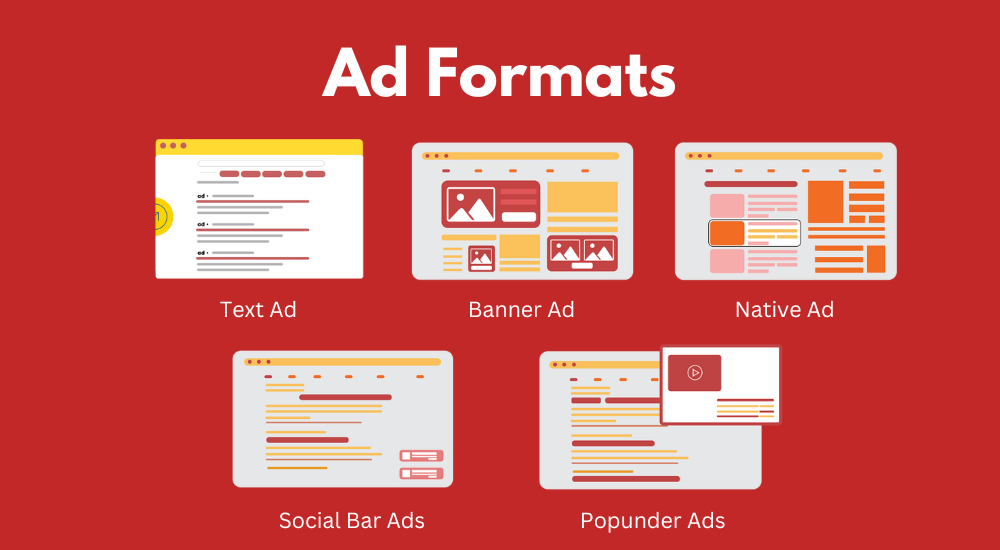
When you look at the types of ad formats available on different ad platforms, it’s important to match them with what you want to achieve and what your audience likes.
For example, 7Search PPC has text, banner, native, popunder, in-page push, and video ads that perfectly work for different goals like sales or brand awareness. Now, let’s take another example: Facebook ads; they offer carousels and video ads that are great for social media users.
Selecting the appropriate ad format that aligns with your audience’s behavior and preferences can increase engagement and prompt action. This allows your ads to effectively convey your message on your chosen advertising platforms.
Analytics and Reporting
When picking an advertising platform, it’s crucial to choose one with good analytics and reporting tools. These tools give you detailed info on how well your ads are doing—things like clicks, sales, and views. Platforms such as 7Search PPC and Google Ads have user-friendly dashboards that allow you to instantly assess the effectiveness of your ad campaigns. By utilizing these analytics, businesses can determine which strategies work best, make adjustments based on data, and maximize their return on investment.
Choosing a platform with real-time and accurate analytics helps you keep improving your ad campaigns to get better results over time.
Customer Testimonials and Reviews: See What They Say
The next thing is you should read reviews and testimonials from other advertisers to understand if a platform is trustworthy and works well. This can give you a hint about how good the platform is, how well it helps customers, and how happy people are with it overall. By checking these reviews, you can decide wisely before choosing an advertising platform that fits your needs.
Customer Support
The final step is to research the quality of customer support of the advertising platform you have chosen for your ad campaigns. Good support means you can get help quickly and advice when you need it, which makes managing your ad campaigns easier and more effective.
Final Thoughts
Don’t just pick any random advertising platform for your business. Choosing the right one can make a big difference in the success of your ad campaign. You can refine your choices by taking into account your advertising objectives, target audience, budget constraints, and preferred ad formats.
Look for ad platforms that offer advanced analytics and accurate reporting so you can track your results and make adjustments as needed. Remember to check customer reviews and see what kind of customer support the platform offers. By following these steps, you will be well on your way to selecting the ideal advertising platform to help you reach your business goals.
Frequently Asked Questions (FAQs)
What are online advertising platforms?
Ans. These platforms are like control centers for your online advertising. They help you design ads, target the right audience, and track your online ads’ performance.
Which advertising platform is best for me if I have a limited budget?
Ans. 7Search PPC is a good option for businesses with smaller budgets. You can start campaigns with just $100 and set a daily budget as low as $15.
How do I know which ad format to choose?
Ans. The best ad format depends on your goals and audience. For example, banner ads are great for grabbing attention, while native ads are good for driving traffic to your website.
Where can I find customer reviews of advertising platforms?
Ans. You can find reviews of advertising platforms from various sources, such as Trustpilot and PPC Hero.
Can I use multiple advertising platforms at the same time?
Ans. Yes, you can utilize multiple advertising platforms to reach and engage a wider audience. However, it is important to track your results for each platform to see which ones perform the best.

